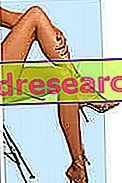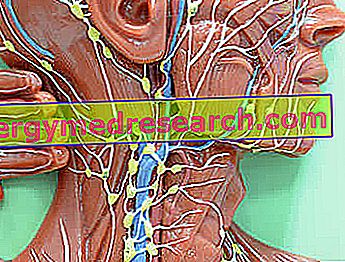INDEX OF THE SECTION
»Varicose veins: Anatomy
»Varicose veins: Introduction and epidemiology
»Varicose veins: Causes and Classification
»Varicose veins: Symptoms and Diagnosis
»Varicose veins: Therapy
»Varicose veins: Drugs to treat varicose veins
»Varicose veins: Remedies for varicose veins
Generality
The World Health Organization defines varicose veins (or varices ) as abnormal and saccular dilations of the veins, especially of the lower limbs, which often take a tortuous course.

Only 1.1% of males and 2.2% of females are admitted for surgery to varicose veins of the lower limbs. The most frequently affected sites are the superficial veins of the lower limbs.
Epidemiology
In the general population the varicose disease has a frequency of 15-30%, if we consider only the degeneration of the systems of the vein Safena and its collaterals (see: anatomy veins); if we want to extend the concept also to the modest varicosities of only aesthetic relevance, this figure reaches 35%. There is a notable difference between the various countries: the disease is much more frequent in Europe than in Africa or Asia, where a prevalence 10 times lower is found.
Causes
Factors that can cause varicose veins:- Constipation, which hinders the return of venous blood upwards
- Obesity
- Deficiency of the muscular pump
- Standing work (upright) in a warm environment (which favors dilation of the vessels)
- Alterations of the veins present at birth (congenital);
- Age (between 30 and 50 years);
- Sex (predominantly female).
The factor that most affects venous blood pressure is posture; during standing, especially if prolonged, venous pressure increases considerably, up to ten times the normal pressure. Consequently, occupations that require an upright posture for long periods of time or long journeys by car or plane often lead to the onset of marked venous stasis and the appearance of edema (swelling due to the presence of fluid) on the feet . Varicose veins are much more frequent after 50 years of age, in obese and especially female people, due to the high venous pressure that pregnancy causes in the lower limbs. Furthermore, the high levels of estrogen present in the female sex facilitate the relaxation of the venous wall musculature. It is believed that the family tendency detected in varicose vein disease is due to an altered development of the venous wall.
The real cause of dilation of the veins in the lower limbs, however, has not yet been defined; there are basically two hypotheses for which the valves and the structure of the vein wall are considered to be responsible, respectively. The hypothesis of a valve degeneration seems difficult to sustain today: ultrasound techniques have allowed us to highlight how the branches of some veins of the lower limbs can undergo varicose degeneration even when there is good valvular continence. The researchers' attention therefore turned to the structure of the varicose vein wall, in which there appears to be less collagen and elastin than in the normal venous wall.
If there are varicose veins with valve insufficiency of the saphenous vein systems and communicating veins, part of the blood pushed towards the heart during walking tends to flow back into the superficial circulation and from this to flow back into the deep circle, thus implementing a vicious circle. The haemodynamic effect of this mechanism consists in a lower fall in the ambulatory pressure of 20 centimeters of water and in a faster restoration of the basal pressure values of 80-100 centimeters of water. The failure to reduce venous pressure during muscular exercise is the basis of almost all the pathologies of the venous system, both superficial and deep, and as such represents a risk factor for varicose veins.



